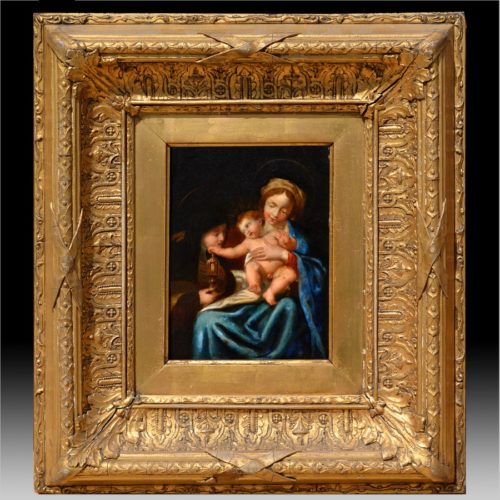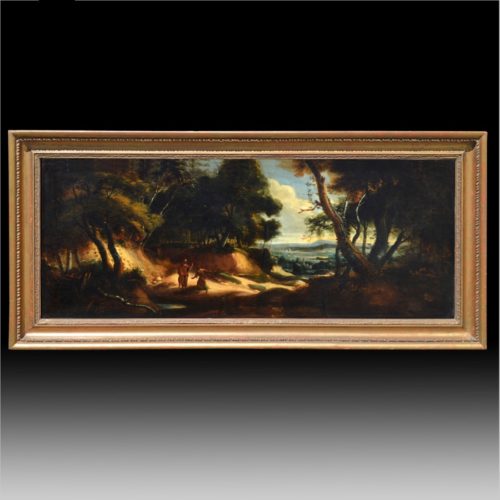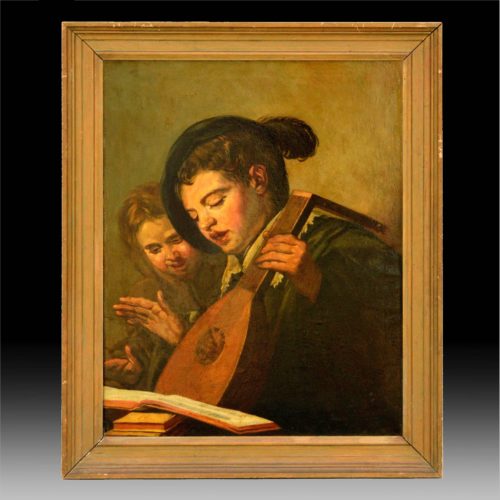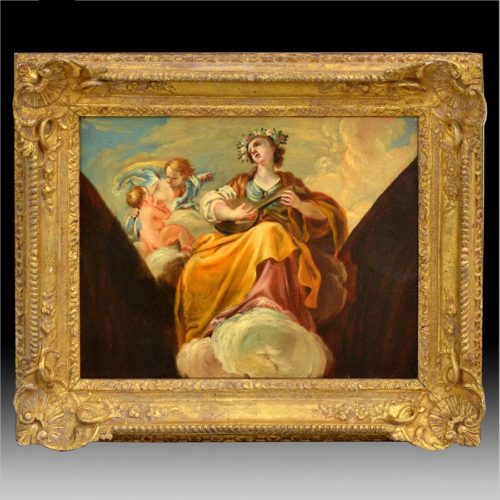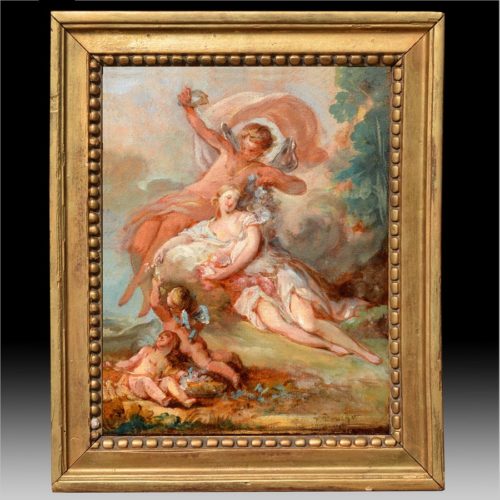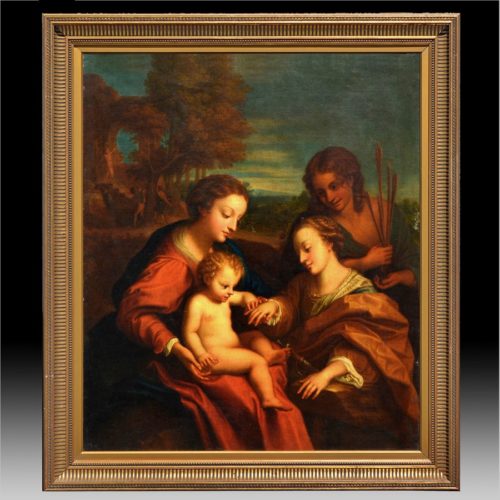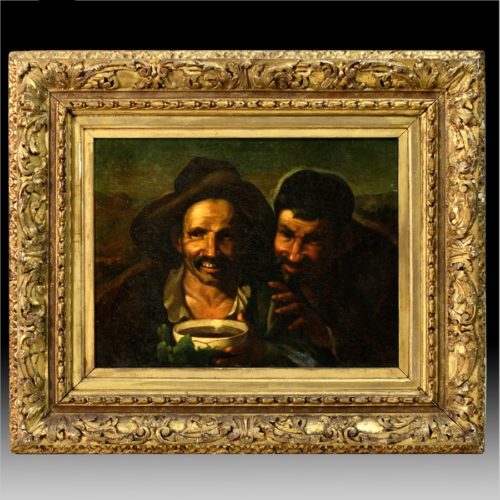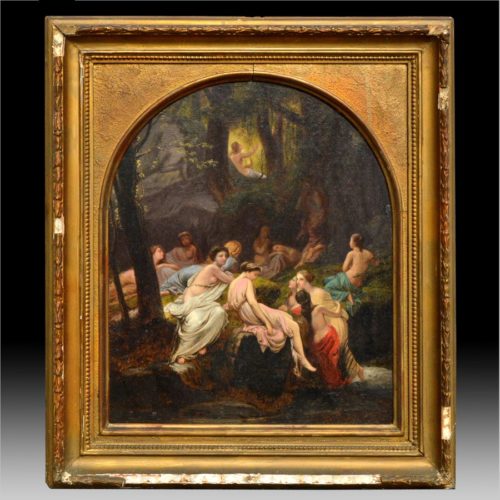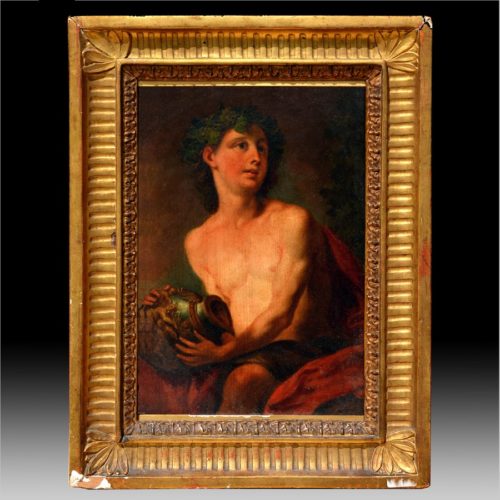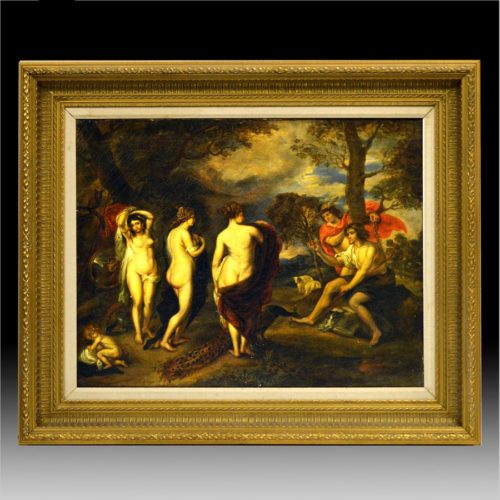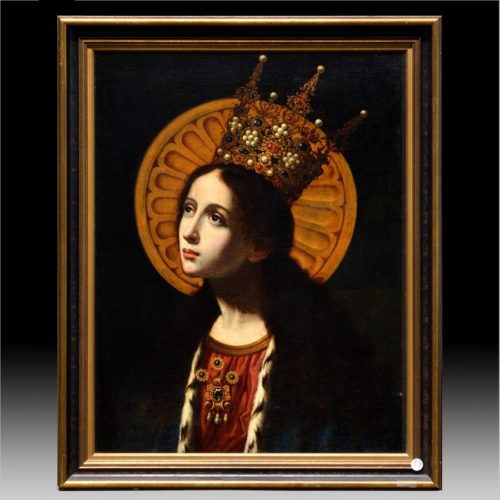-
Lodewyck de Vadder ‘The Temptation in the Wilderness’ oil on canvas 17 ¾ x 44 in. (45 x 111.8 cm) CL102794-177 351003-2 @AC-NB
-
F. Hohle (early 20th Century) after Frans Hals. ‘Two singing Boys’ signed lower right F. Hohle cop and with the monogram lower left FG, oil on canvas 66.5 x 53 cm The original, on canvas, 66x52 cm, is in the Staatliche Kunstammlung Kassel. It was acquired by Landgraf Wilhelm VIII of Hessen in 1749 (see S.Slive, Frans Hals, 1974, II.fig. 44 and III.pp.15/16, no.23) CA102894-46 734506-3 @Albertson
-
Francisco Bayeu Y Subias (1734-1795) “An Allegorical Figure of Music, a Study for a Pedentive” Oil on paper laid down on canvas 13 ¼ x 16 ½ inches Francisco Bayeu y Subias (9 March 1734 – 4 August 1795) was a Spanish painter, active in a Neoclassic style, whose main subjects were religious and historical themes. Born in Zaragoza, Aragon, he received a broad childhood education. He then moved to Madrid, winning a scholarship with the painting of the ‘’Tyranny of Gerion’’ to study in the Academia Real de Bellas Artes de San Fernando. The death of his parents and the care of his brothers forced him to return to Zaragoza, until he was recalled by Anton Raphael Mengs to help decorate the Royal Palace of Madrid. He served as court painter to King Charles III of Spain. He was named a professor of the Royal Academy of Fine Arts of San Fernando in 1765 and director in 1788. He painted in the Charterhouse of Aula Dei in Zaragoza. In 1767 he was named court painter for Charles III, king of Spain. He was involved in the decoration of various Royal palaces near Madrid. He helped provide designs for tapestries. He also painted for the College of San Ildefonso, the Royal Monastery of the Incarnation (Madrid), the Basilica of our Lady del Pilar in Zaragoza, and the cloister of the Cathedral of Toledo.
-
JaquesNatoire with indistinct signature, ‘F Boucher’ “Zephyr Flora” Laid down on canvas 10 ½ x 8 inches (26.7 x 20.3 cm) CL102794-137 451003-2 @NB-1040 #62
-
Diego Velaquez Bacchus – a detail Oil on canvas 16 x 20 ½ in. 40.7 x 52.1 cm CL102794-233 325501-2 @AC-GN
-
Charles François Jalabert Women in the Forest Oil on canvas Within a painted arch 39.4 x 31.8 cm S71791-209 899001-3
-
Giovanni Antonio Pellegrini (Italian, 1675-1741) “The Young Bacchus” Oil on panel 11 x 7 ½ inches (27.9 x 19.2 cm) Giovanni Antonio Pellegrini (29 April 1675 – 2 November 1741) was one of the leading Venetian history painters of the early 18th century. His style melded the Renaissance style of Paolo Veronese with the Baroque of Pietro da Cortona and Luca Giordano. He travelled widely on commissions which brought him to England, the Southern Netherlands, the Dutch Republic, Germany, Austria and France. He is considered an important predecessor of Giovanni Battista Tiepolo. One of his pupils was Antonio Visentini. Pellegrini was a pupil of the Milanese painter Paolo Pagani. He travelled with his master to Moravia and Vienna in 1690 and was back in Venice in 1696 where he painted his first surviving works.
-
Sirens and Seduction Pair of Paintings Provenance: France AC. 28.000 @AL 7/13


